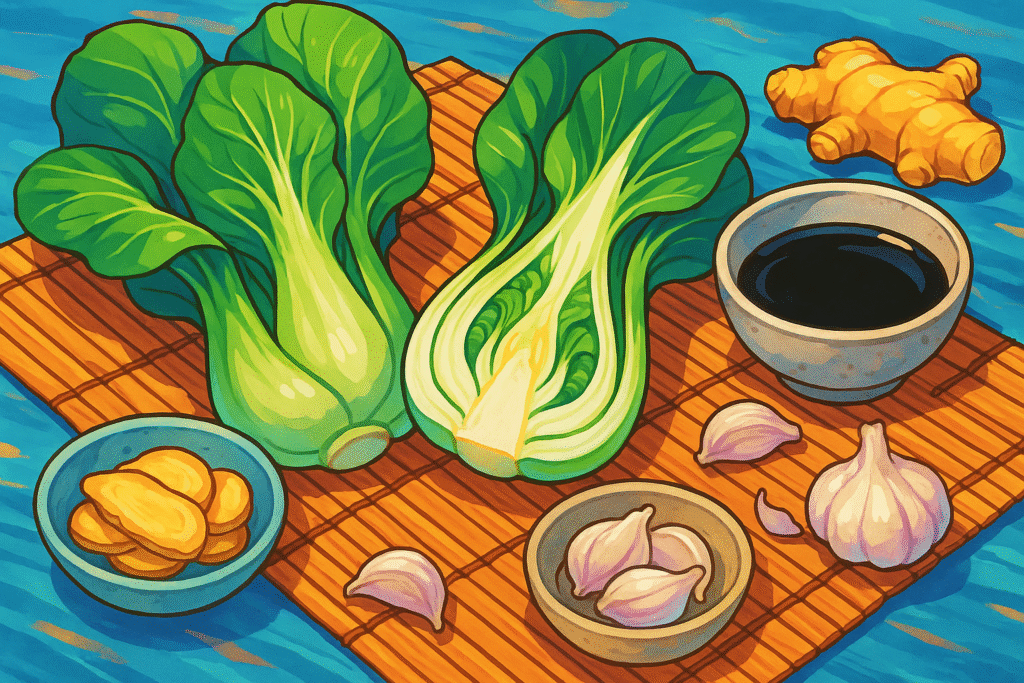Bok Choy (Brassica rapa subsp. chinensis)

About Bok Choy
Bok choy, also called pak choi or Chinese cabbage, is a leafy green with crisp white stems and tender green leaves. It’s mild, juicy, and slightly peppery — the perfect partner for garlic, soy, and sesame in stir-fries, soups, and braises.
Its dual texture — crunchy stem and silky leaf — makes it incredibly versatile, especially in quick-cook dishes.
The History of Bok Choy
Native to China, bok choy has been cultivated for over 5,000 years and is deeply embedded in East Asian food culture. It features in ancient Chinese medical texts and traditional dishes across regions — from hot pots in the north to delicate stir-fries in the south.
The name bok choy comes from Cantonese, meaning “white vegetable.” It spread with Chinese diaspora communities to Southeast Asia, the Americas, and beyond, where it’s now a familiar market staple.
The Science of Bok Choy
As a member of the brassica family, bok choy contains glucosinolates — sulfur-rich compounds with mild bitterness and potential anti-cancer properties. It also offers calcium, vitamin C, A, and K, plus a hydrating, low-calorie crunch.
It’s tender enough to eat raw, but cooking mellows its bite and brings out natural sweetness in the stems.
The Geography of Bok Choy
Grown extensively in China, Taiwan, Southeast Asia, and increasingly worldwide. It prefers cool weather and grows quickly, making it a staple in both small gardens and commercial farms.
In the U.S., it’s cultivated in California and increasingly popular in farmers markets and CSA boxes due to its fast growth and high yield.
Varieties of Bok Choy
Shanghai Bok Choy
Shorter, spoon-shaped leaves with pale green stems. Sweeter and milder, great for quick stir-frying.
Canton Bok Choy
Traditional variety with white stalks and darker green leaves. More pronounced flavor, ideal for braising or soups.
Baby Bok Choy
Harvested young — ultra tender and quick-cooking. Often halved and grilled or sautéed whole.
Choi Sum (related)
Flowering variant with yellow blossoms and tender stems. Slightly more bitter, used in Cantonese cuisine.
Tat Soi (similar)
A rosette-forming green with dark leaves and a more mustardy taste. Often mixed into salads or wilted into broths.
FAQs All your questions about Bok Choy: answered
Can you eat bok choy raw?
Yes! Young leaves and stems are crisp and mild — perfect for slaws and salads.
How do you clean bok choy?
Split it lengthwise and rinse thoroughly between stalks, as dirt often collects at the base.
What’s the difference between bok choy and napa cabbage?
Bok choy has darker leaves and crunchy stalks. Napa is softer, more wrinkled, and often used in kimchi or stews.
Is bok choy good for digestion?
Yes — it’s high in fiber and water, which support regularity and gut health.